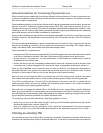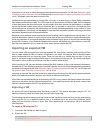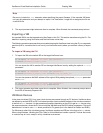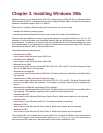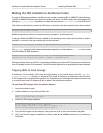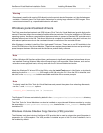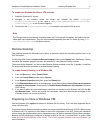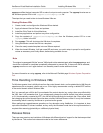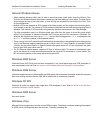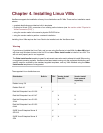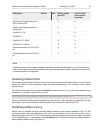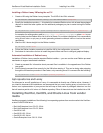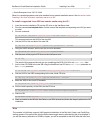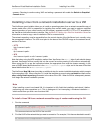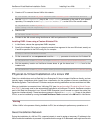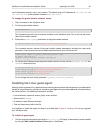
XenServer Virtual Machine Installation Guide Installing Windows VMs 13
General Windows Issues
• When installing Windows VMs, start off with no more than three virtual disks. Once the VM and Citrix
Tools for Virtual Machines tools have been installed you can add additional virtual disks. The boot device
should always be one of the initial disks so that the VM can successfully boot without the Citrix Tools
for Virtual Machines.
• Multiple VCPUs are exposed as CPU sockets to Windows guests, and are subject to the licensing limita-
tions present in the VM. The number of CPUs present in the guest can be confirmed by checking Device
Manager. The number of CPUs actually being used by Windows can be seen in the Task Manager.
• The disk enumeration order in a Windows guest may differ from the order in which they were initially
added. This is because of interaction between the PV drivers and the PnP subsystem in Windows. For
example, the first disk may show up as Disk 1, the next disk hotplugged as Disk 0, a subsequent disk
as Disk 2, and then upwards in the expected fashion.
• There is a bug in the VLC player DirectX backend that causes yellow to be replaced by blue when playing
video if the Windows display properties are set to 24-bit color. VLC using OpenGL as a backend works
correctly, and any other DirectX- or OpenGL-based video player works too. It is not a problem if the guest
is set to use 16-bit color rather than 24.
• The PV Ethernet Adapter reports a speed of 2 Gbps in Windows VMs. This speed is a hardcoded value
and is not relevant in a virtual environment because the virtual NIC is connected to a virtual switch. The
NIC will actually perform at the same rate as the physical NIC.
Windows 2003 Server
Windows Server 2003 32-bit does not boot successfully if any virtual disks larger than 2TB (terabytes) in
size are attached to the VM. See this article in the Windows Hardware Developer Central website.
Windows 2008 Server
Quiesced snapshots taken on Windows Server 2008 guests will not be directly bootable. Attach the snapshot
disk to an existing Windows Server 2008 VM to access files for restoration purposes.
Windows XP SP3
Windows XP does not support disks larger than 2TB (terabytes) in size. See this article in the Windows
Hardware Developer Central website.
Windows 2000 Server
No known issues.
Windows Vista
Microsoft Vista recommends a root disk of size 20GB or higher. The default size when installing this template
is 24GB, which is 4GB greater than the minimum. Consider increasing this.



